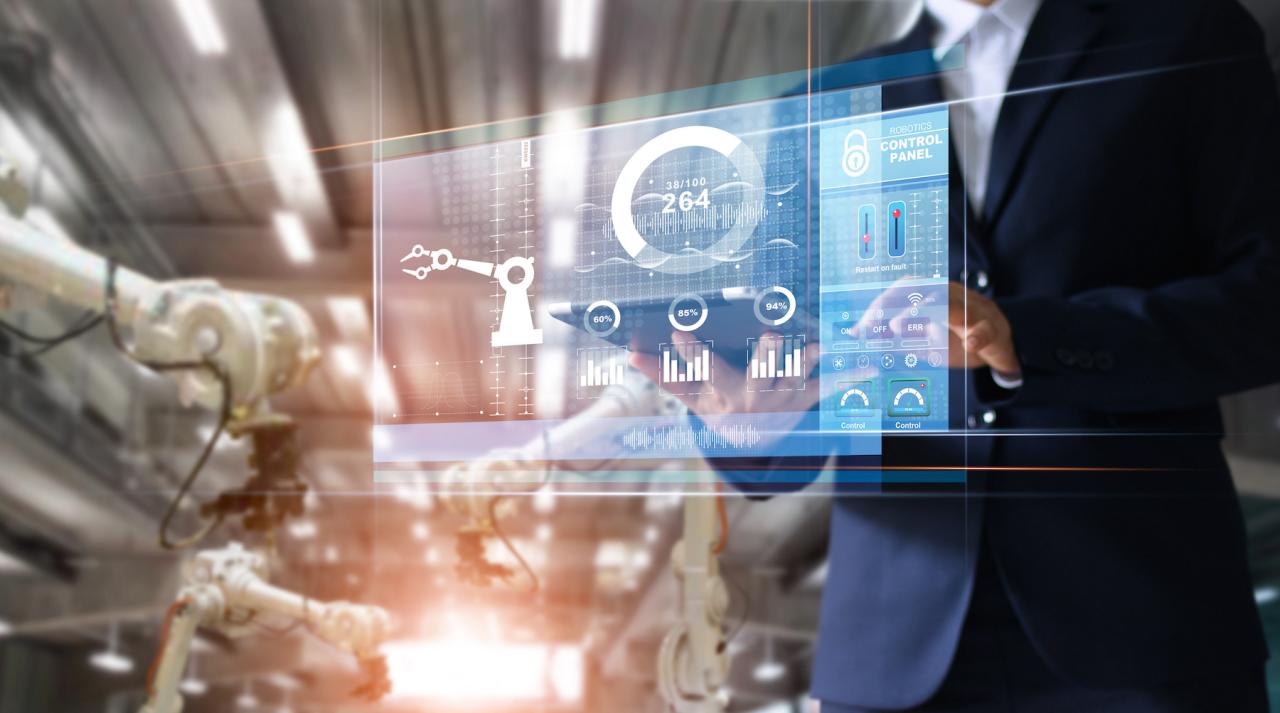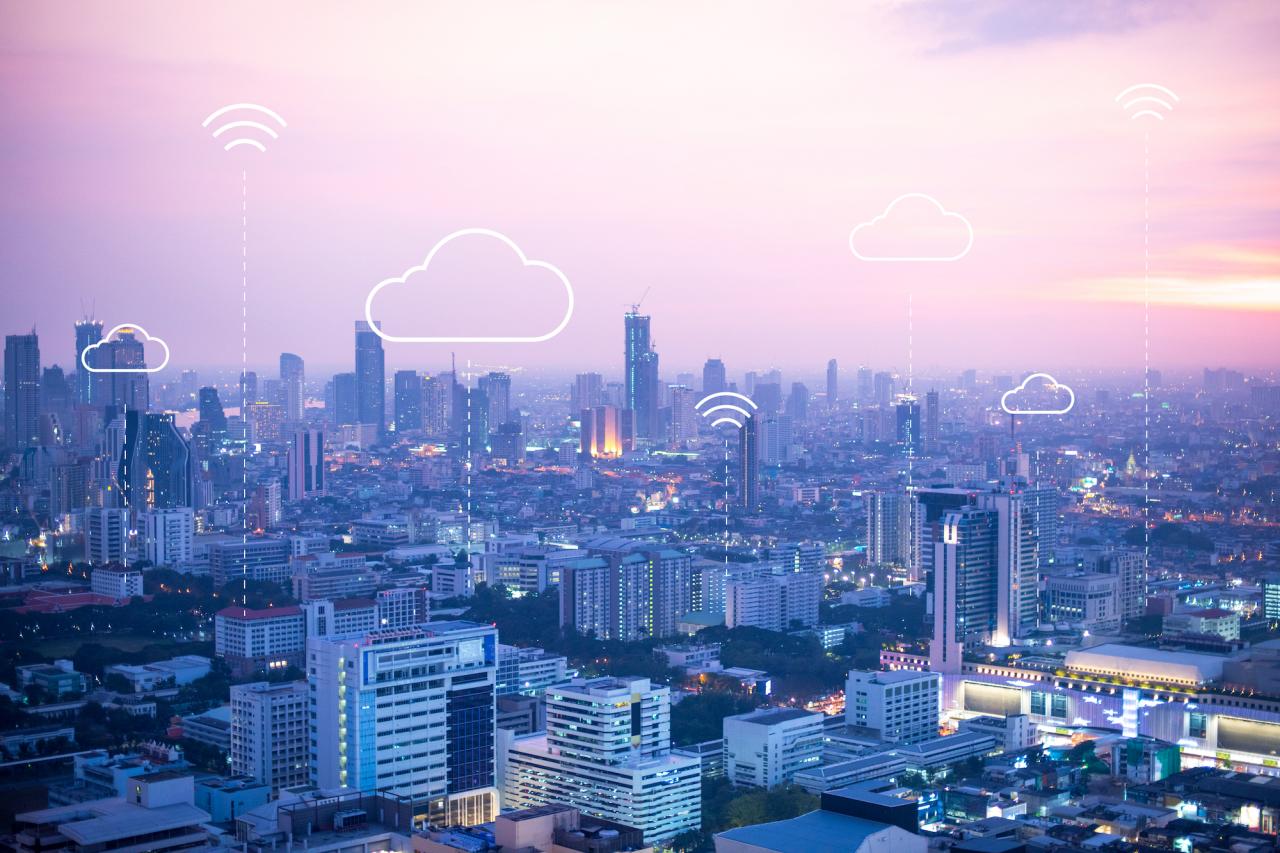Trendreport: IIoT Trends for 2023 and beyond
- What does IIoT/Industrial Internet of Things mean?
- What are examples and application fields of IIoT/Industrial Internet of Things?
- Interview with Bernhard Günthner about the developments, challenges and IIoT trends of the year 2023
The IIoT is THE technology trend of the present. However, although the IIoT has already made remarkable progress in the areas of research, customer service and production in recent years, the major technological successes are still to come. According to forecasts, the IIoT could grow by 16.7 percent between 2022 and 2027 - reaching a total market share of $264 billion*.
In this interview, Bernhard Günthner, Managing Director of Kontron Technologies GmbH and EVP IoT Software, not only looks back at the developments of the past few years, but also tackles future expectations and forecasts of the IIoT for the coming year.
What does IIoT / Industrial Internet of Things mean?
IIoT - short for Industrial Internet of Things - by definition refers to a network that connects sensors, instruments, devices and controllers in the context of industrial applications. As a subsection of the Internet of Things (IoT) and Industry 4.0, the IIoT functions as a kind of industrial ecosystem designed to sustainably optimize and automate production processes: Devices linked via IIoT generally communicate with each other independently and automatically pass on information in the process.
The exchange of telemetry or sensor data on the shop floor or in autonomous navigation within production environments makes it possible, for example, for driverless transport vehicles to navigate autonomously, process transport orders automatically and coordinate with other vehicles or the logistics center. The sensors contained in the machines provide the data basis on which end devices learn automated processes. This saves companies time and resources.

Excursus: What does the "Industrial Internet" stand for?
The term "Industrial Internet" originally came from General Electric and was intended to describe the third major wave of industrial innovation in 2012, following the industrial revolution of the 19th century and the introduction of mainframe computers in the 1950s to 1990s.
Today, the "Industrial Internet" is representative of the fourth industrial revolution - also known as Industry 4.0. The goal is to bring together intelligent devices, advanced data systems, and physical and human networks to optimize operational processes and thus increase business efficiency.
What are examples and application fields of IIoT/Industrial Internet of Things?
IIoT-controlled end devices are used in almost all key positions of companies. Especially in the course of digital transformation, there are three typical areas of application:
Production and logistics
In the course of Industry 4.0, the complexity of production processes is continuously increasing. This complexity can often only be efficiently mapped by directly networking all machines involved in the production process. Intelligent IIoT systems give companies deeper insights into the individual operations within the process and supply chains, allowing them to control and monitor processes more precisely. The real-time data obtained on, for example, the location, condition and stock levels of each product are used to optimize processes and thus ensure higher production quality.
Energy management
In times of scarcity and massive increases in the cost of energy resources, the topic of saving energy is gaining relevance on an almost daily basis. IIoT sensors measure the energy consumption of each individual production unit - with the aim of identifying and specifically reducing excessive energy costs.
Predictive maintenance
Almost a classic: IIoT-controlled devices contain sensors that continuously monitor the condition of the machines. By measuring temperature, pressure, vibration frequency and other parameters in real time, any malfunctions and their causes can be identified at an early stage. The aim of predictive maintenance is to significantly reduce downtime of production machines. Read more about predictive maintenance and related approaches here.

Interview with Bernhard Günthner about the developments, challenges and IIoT trends of the year 2023
Bernhard Günthner, Managing Director of Kontron Technologies GmbH, took over the position of EVP IoT Software in October 2019. Previously, he worked as VP Customer Programs for Kontron AG for more than ten years, among other things, and was responsible for customer-specific system solutions in the areas of industrial automation and medical. After graduating with a degree in electrical engineering from the Technical University of Munich, Bernhard Günthner started his career in software development for telematics and ticketing systems. He can thus be counted among the IoT pioneers.
How has the IIoT/Industrial Internet of Things evolved in recent years?
"Although the IIoT has already become increasingly important in recent years, the COVID19 pandemic certainly helped to accelerate the adoption of IIoT technologies in manufacturing, transportation, energy and other industries. In particular, the focus was on implementing smart connectivity solutions to enable remote assembly and maintenance of equipment and machinery. These solutions often emerged directly from the IT environment, which meant that existing, classic IT solutions were often used."
What challenges does this create for 2023?
"The IT solutions that were usually installed quickly and sometimes ill-considered are already reaching the limits of their capabilities - especially in terms of cyber security and usability. For example, with the installation of IIoT-enabled end devices, companies are confronted with an enormous amount of data. These are often highly sensitive data records that must not be disclosed to third parties under any circumstances. Due to their connection to the Internet, IIoT infrastructures require special data protection and security precautions. Added to this are the often-excessive operating costs and the still unresolved question of standardization - particularly with regard to logging by different manufacturers. The biggest challenge for us now is to supplement or even replace these systems with solutions suitable for industrial use. This requires dedicated projects with sufficient budgets to avoid getting stuck halfway on the digitization journey."
"In order to remain competitive in the future, manufacturing companies are forced to constantly deal with new technologies and innovations. IIoT is thus becoming a topic that cannot be ignored."
– Bernhard Günthner, Managing Director of Kontron Technologies GmbH
What are the benefits of IIoT for companies? Why is it so important for companies to address innovations and trends?
"In order to remain competitive in the future, manufacturing companies are forced to constantly deal with new technologies and innovations. IIoT is thus becoming a topic that cannot be ignored. The advantages are almost obvious: Companies networked by means of IIoT benefit from reduced downtimes, lower maintenance costs, more safety in the workplace, and continuous optimization and automation of production processes. Higher product quality also ensures greater customer satisfaction and a clear competitive advantage over other market players."
What are the requirements for IIoT?
"First of all, the most important requirement is that companies embrace the topic with an open mind. Digitization affects all key positions in a company and cannot be regarded as a project of a single department. Rather, it is a long-term process during which the company must change or adapt to the changed requirements. To ensure that not only individual production processes but virtually all areas are included in the development process, it is advisable to set up an interdisciplinary team."
What are the IIoT trends regarding connectivity and predictive maintenance / monitoring in 2023? How does susietec® address or has already addressed these trends?
"As hardware and software experts who deal with the developments, challenges, and innovations of the IIoT daily, we see two main trends for 2023:
In the area of connectivity, the focus is increasingly on standardized interfaces. This ensures that the design and implementation of new production lines will be massively reduced. We have already recognized this development in advance and developed the appropriate solution with FabEagle®Connect: With FabEagle®Connect, we standardize interfaces between OT and IT at integration level, thus enabling the scalable application and maintenance of complex IT systems. The modular structure makes it possible to provide functioning configurations after a training period of just a few minutes.
In the area of predictive maintenance as well as predictive monitoring, we are looking forward to developments in software maintenance. The remote management tools SecureOS and KontronGrid from the kontron susietec® toolset already cover both topics. With SecureOS, we deliver an industrial IoT-to-cloud operating system based on Linux that guarantees the highest security and timeliness of embedded hardware devices over the entire product lifecycle. KontronGrid is a digital platform that supports companies in the automated commissioning, care, and maintenance of their solution in the field."

To sum up: What can we expect in 2023 and beyond in the area of IIoT?
Companies won’t be able to avoid the IIoT in 2023: It is no longer just large corporations that will benefit from the possibilities of optimized Internet communication and cost-effective management, but also small and medium-sized enterprises. The use of IIoT makes a lasting contribution to reducing operating costs and improving workflows in the manufacturing process.
Despite the promising developments, IIoT is still in its early stages. Thus, many companies are still hesitant, but are opening up more and more to digital transformation.
Especially for companies that want to gain a competitive advantage over other market players, the introduction of IIoT-controlled devices and software solutions is almost a must. As experts in the field of IIoT, we are here to advise and support you in finding the right solutions for your business.
For more information contact us here.
* https://network-king.net/de/iiot-der-umfassende-leitfaden/
Learn more about FabEagle®Connect





